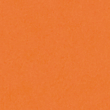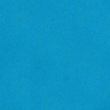How to Make Paper Envelopes
- By Andrew Jacobs
- Nov 14, 2013
How to Make Paper Envelopes
At JAM we are known for our huge selection of specialty envelopes in every shape, color, texture, and size. But what if you want to create your own envelopes for a homemade, one of a kind feel? Then we've got you covered. Find out how to make paper envelopes in three easy steps from this JAM DIY tutorial.Materials
- Decorative Cardstock (Find your favorites here)
- Ruler
- Pencil
Step One - Measuring
To create an envelope, follow this envelope template we created to get the perfect measurements from a standard 8 1/2 x 11 piece of paper . It makes one 4 1/2 x 6 1/2 sized envelope which is a little bit smaller than the average A6 envelope. Lay the paper out vertically and measure out 1" on each side. Gently sketch a line down the length of the paper with your pencil. (You can go back and erase these markings at the end). Next, measure upward 4 1/2" twice and draw the lines horizontally across the paper. This will be the body of the envelope and will also create the top flap.Step Two - Creasing
Now that you have all of your lines measured out, the next thing you need to do is crease the paper along the lines you just measured out. Take a ruler and line it up along the sketched-out line. Gently fold over the paper to create a slight crease. Remove the ruler and continue to fold along this crease while flattening it down. Do the same for all of the pre-drawn fold lines.Step Three - Folding
Once you have creased all of the lines you will see the envelope begin to take shape. Holding the paper vertically, fold the two 1" edges down. Next, take the bottom of the paper and fold it up onto the other crease. The last step is to take the top flap and fold it down while tucking it into the side flaps. If done correctly, the paper should stay folded into itself without any glue or adhesive. This will create your standard envelope with a square flap. This envelope can be used for party invites and greeting cards. So there it is folks! In three easy steps, you have learned how to make paper envelopes.
This will create your standard envelope with a square flap. This envelope can be used for party invites and greeting cards. So there it is folks! In three easy steps, you have learned how to make paper envelopes.
Creating Your Own Paper Envelopes: A Fun and Practical DIY Project
Learning how to make paper envelopes is a fun and practical DIY project that allows you to personalize your stationery and add a personal touch to your correspondence. Making your own envelopes is not only a creative and enjoyable activity, but it also allows you to repurpose old paper and reduce waste. Whether you're sending a heartfelt letter, a special invitation, or a thoughtful card, a handmade envelope adds a unique and personal touch to your message. With just a few simple materials and some basic folding techniques, you can create beautiful and functional envelopes that are perfect for any occasion.
The Benefits of Making Your Own Paper Envelopes
One of the main benefits of making your own paper envelopes is the ability to customize them to suit your personal style and the theme of your message. You can choose from a wide variety of paper colors, patterns, and textures to create envelopes that are truly unique. Additionally, making your own envelopes allows you to reduce your environmental impact by reusing paper and reducing the need for store-bought envelopes. Not to mention, it's a cost-effective alternative to purchasing pre-made envelopes, especially if you're making a large quantity for a special event or occasion.
Practical Use Cases for Handmade Paper Envelopes
Handmade paper envelopes are perfect for a wide range of uses, including sending personal letters, invitations to special events, or thank-you cards. They are also great for packaging small gifts or keepsakes, adding a personal and thoughtful touch to your presents. Whether you're a craft enthusiast looking for a new project or someone who appreciates the art of handwritten correspondence, making your own paper envelopes is a versatile and practical skill that can be used in various creative and functional ways.
Alternatives to Traditional Envelopes
If you're looking for alternatives to traditional paper envelopes, consider using recycled materials such as old maps, sheet music, or magazine pages to create unique and eco-friendly envelopes. You can also experiment with different folding techniques and closure methods to add a creative twist to your handmade envelopes. Additionally, fabric envelopes or reusable cloth pouches are a sustainable and stylish alternative to paper envelopes, perfect for special occasions or eco-conscious individuals.
Tips for Making the Perfect Paper Envelope
When making your own paper envelopes, it's important to choose the right paper weight and size to ensure that your envelopes are durable and functional. Experiment with different paper types and textures to find the perfect material for your envelopes. Additionally, pay attention to the folding and sealing techniques to ensure that your envelopes are secure and well-crafted. Finally, don't be afraid to get creative and add personal touches such as decorative elements, custom labels, or hand-drawn designs to make your envelopes truly one-of-a-kind.
Embracing the Art of Handmade Paper Envelopes
Learning how to make paper envelopes is a rewarding and enjoyable craft that allows you to express your creativity and add a personal touch to your correspondence. Whether you're a seasoned crafter or a beginner looking for a new project, making your own envelopes is a practical and eco-friendly way to enhance your stationery collection. With endless possibilities for customization and personalization, handmade paper envelopes are a versatile and charming addition to any occasion or message.



















